Museum wants permission to demolish heritage home for expansion project
Heritage board endorses application as $150M project moves through city approvals
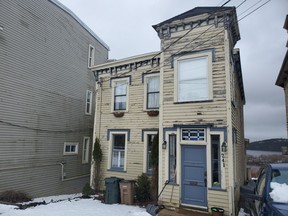
Article content
Saint John’s heritage board “begrudgingly” signed off on plans to demolish a 143-year-old residential building on Douglas Avenue in exchange for a bigger heirloom: the New Brunswick Museum building.
Diamond Schmitt Architects, the firm behind the $150 million project, went before the board Wednesday with a request to remove a two-storey building at 241 Douglas Ave. from the heritage conservation area for that street, with a goal to demolish it for parking as part of the museum expansion project. The project is also headed to the planning advisory committee for rezoning, and both heritage and planning recommendations will go back to council.
“First of many, and we’re looking forward for all the procedures and protocols we’ve got to go through,” said Justin Sears, project manager for the museum, who told the board the project “highlights the importance of conserving archeological, paleontological and social heritage.”
On March 27, the provincial government unveiled plans for the museum, which involves a 130,000 square-foot expansion behind and to the north of the 1934 building that houses its archives. As part of that, the heritage board heard, the province has bought or is buying six neighbouring properties, including 241 Douglas Ave., the only one that has heritage protection under city bylaws, city architect Rodrigo Mendes Campos told the board.
The park to the south of the museum is protected by provincial legislation and discovery of Indigenous artifacts in the wooded area behind the museum mean that any new development must take place in spaces already disturbed, including the six purchased properties, Campos said. 241 Douglas would be used to satisfy the building’s parking needs, he said.
The building is a two-storey Vernacular Italianate built in 1881, which was considered a “good example” of what was a popular style for construction at the time, but little information exists about its ownership history or design, Campos said.
On Tuesday, Saint John council voted to sell the land that was currently used for a sewage lift system to serve the property and three others. Campos said that with the station decommissioned, the residential property would not have services if the city denied permission to demolish the building.

The Douglas Avenue heritage conservation area was created in 1992 to conserve built heritage, with an “opt-in” system allowing property owners to choose whether to take part. A map of heritage properties shows gap-toothed coverage with Campos saying some “extremely important” buildings were not included but unknown buildings were included.
That’s made it harder to preserve the heritage character of the neighbourhood, he said, which incorporates both working-class tenements and middle-and-upper-class lodgings. He said there’s been loss of buildings with “architectural value.”
Other properties in the area that had been de-designated included 249 Douglas Ave. and 12-14 Bentley St., according to a report. In recent years, a request by J.D. Irving, Ltd., to demolish 111 King St. East, the Paikowsky Home, had been denied by the board in 2022 but approved by council, and 191 Princess St. and 66 Sydney St. were both denied by the board and council, the report said.
The museum building is not heritage-designated, despite the fact that the corner of the building crosses into the park, which is. The 1934 “landmark” building was designed by Harry Clare Mott and used to house the museum from 1934 to 1996, when the main museum moved to Market Square, and its heritage value includes both the architecture as well as its ties to the museum and archives, Campos said.
Sears said they’ve committed to including the original 1934 museum building in the heritage conservation area once the process is complete. That would make it subject to heritage permits in the future. Sears also said they would take 3D scans of the building so museum visitors could see what it looked like.
Most applications to de-designate consider maintenance issues or disagreement with heritage restrictions, Campos said, so it’s rare to see an application involve revitalization of a different heritage property.
“This is not a simple application, as the demolition of a heritage property is never advised or celebrated,” Campos said, but he said the building represents a “public benefit” in and of itself, and to the heritage area.
Board members asked about whether parking could have gone elsewhere, why the development could not be made smaller to save the building or whether architectural salvage or relocation of the property was possible.
Melissa Wakefield, who is usually board chair but on this occasion was representing EXP Architects, said there were “many, many layers of decision-making and feasibility studies” studied regarding the size of the building and footprint, including parking.
“It had to go somewhere, and ultimately that’s where it landed,” she said.

Board member Rod Stears said he was “begrudgingly” voting in favour, saying he felt the design could have been changed to protect the building but council has the final say and the “public outcry” in holding up the project could be significant.
Coun. Paula Radwan noted she hadn’t previously voted to support previous de-designations at council, but ultimately she seconded the recommendation, citing the description in the letter saying heritage value requires a “holistic review” of place, condition, and the past and current importance to the community.
“I do see significant architectural significance with the museum versus the house. To have the museum designated is very significant,” she said.
The vote passed with all present voting in favour except Julien Ouimet, who abstained.
Vice-chair Adam Pottle said there has been “a bit of reluctance” from the board regarding de-designation after 111 King St. East, but the trade-off of having the museum offered a “pretty reasonable case.”
“This is on the side of a cliff, you can’t go down, you can’t go into the park. Either … downsize to the point where it wouldn’t really make sense to build the museum as large, or lose this one property,” Pottle said. “I hope the museum board and the province are somewhat supportive of seeing if anyone will take it off their hands or at least put it to good use.”
The board also voted to clarify that the part of the museum which is on the park lot is not yet heritage property. City planner Jennifer Kirschner said that’s necessary because a complex provincial process would be needed to change the lot boundaries.






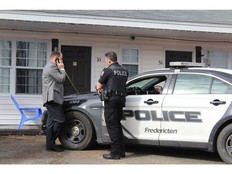
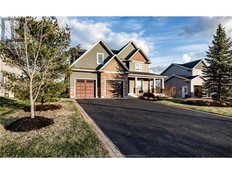
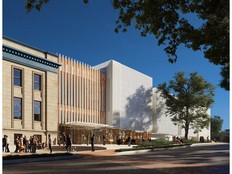
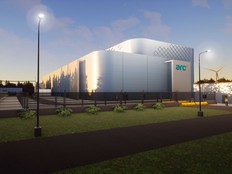


Postmedia is committed to maintaining a lively but civil forum for discussion. Please keep comments relevant and respectful. Comments may take up to an hour to appear on the site. You will receive an email if there is a reply to your comment, an update to a thread you follow or if a user you follow comments. Visit our Community Guidelines for more information.